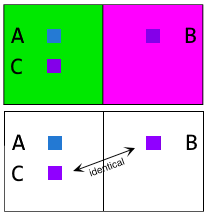Contrast Effect
Deprecated: mb_convert_encoding(): Handling HTML entities via mbstring is deprecated; use htmlspecialchars, htmlentities, or mb_encode_numericentity/mb_decode_numericentity instead in /var/www/wptbox/wp-content/plugins/wppedia/core/classes/modules/class-cross-link-content.php on line 187
Deprecated: mb_convert_encoding(): Handling HTML entities via mbstring is deprecated; use htmlspecialchars, htmlentities, or mb_encode_numericentity/mb_decode_numericentity instead in /var/www/wptbox/wp-content/plugins/wppedia/core/classes/modules/class-cross-link-content.php on line 187
Deprecated: mb_convert_encoding(): Handling HTML entities via mbstring is deprecated; use htmlspecialchars, htmlentities, or mb_encode_numericentity/mb_decode_numericentity instead in /var/www/wptbox/wp-content/plugins/wppedia/core/classes/modules/class-cross-link-content.php on line 187
Deprecated: mb_convert_encoding(): Handling HTML entities via mbstring is deprecated; use htmlspecialchars, htmlentities, or mb_encode_numericentity/mb_decode_numericentity instead in /var/www/wptbox/wp-content/plugins/wppedia/core/classes/modules/class-cross-link-content.php on line 187
Deprecated: mb_convert_encoding(): Handling HTML entities via mbstring is deprecated; use htmlspecialchars, htmlentities, or mb_encode_numericentity/mb_decode_numericentity instead in /var/www/wptbox/wp-content/plugins/wppedia/core/classes/modules/class-cross-link-content.php on line 187
Deprecated: mb_convert_encoding(): Handling HTML entities via mbstring is deprecated; use htmlspecialchars, htmlentities, or mb_encode_numericentity/mb_decode_numericentity instead in /var/www/wptbox/wp-content/plugins/wppedia/core/classes/modules/class-cross-link-content.php on line 187
Deprecated: mb_convert_encoding(): Handling HTML entities via mbstring is deprecated; use htmlspecialchars, htmlentities, or mb_encode_numericentity/mb_decode_numericentity instead in /var/www/wptbox/wp-content/plugins/wppedia/core/classes/modules/class-cross-link-content.php on line 187
Deprecated: mb_convert_encoding(): Handling HTML entities via mbstring is deprecated; use htmlspecialchars, htmlentities, or mb_encode_numericentity/mb_decode_numericentity instead in /var/www/wptbox/wp-content/plugins/wppedia/core/classes/modules/class-cross-link-content.php on line 187
Deprecated: mb_convert_encoding(): Handling HTML entities via mbstring is deprecated; use htmlspecialchars, htmlentities, or mb_encode_numericentity/mb_decode_numericentity instead in /var/www/wptbox/wp-content/plugins/wppedia/core/classes/modules/class-cross-link-content.php on line 187
Deprecated: mb_convert_encoding(): Handling HTML entities via mbstring is deprecated; use htmlspecialchars, htmlentities, or mb_encode_numericentity/mb_decode_numericentity instead in /var/www/wptbox/wp-content/plugins/wppedia/core/classes/modules/class-cross-link-content.php on line 187
Deprecated: mb_convert_encoding(): Handling HTML entities via mbstring is deprecated; use htmlspecialchars, htmlentities, or mb_encode_numericentity/mb_decode_numericentity instead in /var/www/wptbox/wp-content/plugins/wppedia/core/classes/modules/class-cross-link-content.php on line 187
Deprecated: mb_convert_encoding(): Handling HTML entities via mbstring is deprecated; use htmlspecialchars, htmlentities, or mb_encode_numericentity/mb_decode_numericentity instead in /var/www/wptbox/wp-content/plugins/wppedia/core/classes/modules/class-cross-link-content.php on line 187
While Chromatic Adaptation allows an individual to see an object’s “truer” color, this mechanism can also leads to some other problems, such as the Contrast Effect, where other colors shown near (spatially or temporally) the color to be perceived, affect the perception of that color.
Simultaneous Contrast, which shows that two identical colors will appear differently according to the color of their background (or Test Field).
The figure below demonstrates an extreme example of simultaneous contrast. Look at the top image where three colors are placed on colored backgrounds (green and magenta test fields). Which of the three squares are the same from A, B and C? A and B will probably look the same, but this is an illusion. Remove the test fields (look at the bottom image) and it is revealed that B and C are in fact identical. Both have a RGB value of #9000FF, whereas A has a value of #257AD4.

The following figure shows a more basic example of Simultaneous Contrast, where the 4 rectangles appear to be changing in brightness, but are all the same shade of gray.

Successive Contrast is similar, but the confounding color is not shown as a test field, but rather shown before the color to be perceived.
You can therefore think of Chromatic Adaptation as being a sacrifice of performance on Comparative Color Tasks to perform better at Denotative Color Tasks.